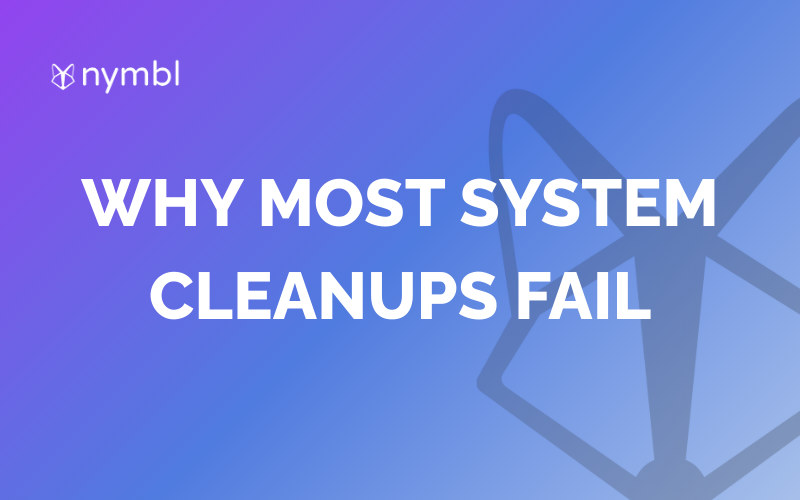5 Essentials for a Successful AI Agent Implementation
One of the biggest questions we get when starting an AI agent project is:
“What do we need in place to actually succeed?”
The truth is, implementing AI agents is not just about the technology. It is about building the right foundation so that your workflows are seamless, your data is trustworthy, and your agents deliver measurable business value. Whether you are experimenting with LLMs (large language models), multi-agent systems, or using an agent framework like LangChain or LangGraph, success comes down to fundamentals.
Here is the essential checklist we walk through with every client, along with real-world examples of how it plays out.
1. High-Quality, Accessible Data
AI agents are only as good as the data they learn from. If your data is messy, siloed, or incomplete, you will end up with poor results no matter how advanced the AI models or machine learning system is.
Why it matters: Agents depend on context to make accurate decisions, whether they are powering a chatbot, a real-time RAG (retrieval-augmented generation) system, or automating internal workflows.
Example: A healthcare provider rolled out an AI agent to support nurses with scheduling and patient inquiries. Because their patient records were inconsistent across departments, the agent frequently returned wrong appointment slots. After improving their data pipelines and APIs for accessibility, scheduling errors dropped by 70%.
How to get it right: Audit your data sources, clean and normalize information, and ensure APIs are in place to make data accessible across teams.
2. A Clear Business Problem to Solve
Too many organizations fall into the trap of “AI for AI’s sake.” Without a well-defined use case, it is easy to get lost in tutorials and step-by-step demos without driving business value.
Why it matters: Whether you are experimenting with no-code AI tools, open-source frameworks, or building with Python and OpenAI, the agent needs a tangible business outcome and strong decision-making logic.
Example: A retail bank wanted to launch agents across customer service, marketing, and compliance all at once. Instead, they started with a focused use case that automated repetitive balance inquiries. That narrowed scope resulted in a 40% drop in call volume and proved value before scaling further.
How to get it right: Start small. Define a single pain point where an agent such as an AI-powered chatbot can have measurable impact.
3. Cross-Functional Team Buy-In
Even the most advanced AI agent or automation system will fail without adoption. Success requires IT, business, and leadership alignment.
Why it matters: Agents built on large language models often cross departments, touching compliance, customer service, and technical workflows. Resistance in one area can block deployment.
Example: A manufacturing company introduced an AI agent for supplier communication. Procurement was on board, but legal and IT pushed back. Once they set up secure APIs, compliance checks, and clear responsibilities, adoption accelerated and the agent now manages 60% of vendor interactions.
How to get it right: Involve stakeholders early. Show not just the functionality, but also the “what is in it for me” for every team.
4. Measurable Success Criteria
What does success look like? Adoption alone is not enough. You need real-time metrics that prove ROI.
Why it matters: Clear criteria such as efficiency gains, accuracy improvements, and customer satisfaction are what turn an agent from an experiment into a scalable AI system.
Example: A logistics firm deployed an agent for shipment tracking. Measuring usage did not tell the story. Once they defined KPIs such as resolution time and customer experience scores, they uncovered a 25% improvement. That proof justified scaling to new workflows.
How to get it right: Define metrics upfront. Tie them directly to the business problem you are solving, whether that is cost reduction, improved real-time insights, or higher productivity.
5. A Secure Tech Environment
AI agents interact with sensitive data, APIs, and internal systems. Security and compliance must be foundational, not an afterthought.
Why it matters: The more integrated your multi-agent system becomes, the higher the stakes for data privacy and regulatory alignment.
Example: A financial services firm piloting agentic RAG systems initially skipped guardrails, which raised compliance concerns. By implementing access controls, encryption, and audit logs, they not only passed regulatory checks but also built internal trust.
How to get it right: Choose secure frameworks, set up governance, and ensure compliance from day one, whether you are using Microsoft Azure, open-source platforms, or third-party vendors.
Final Thoughts
AI agents hold enormous potential, but only when built on a strong foundation. By ensuring your organization has:
- clean, accessible data
- a clear business problem
- stakeholder alignment
- measurable KPIs
- a secure environment
you will maximize ROI and accelerate your AI transformation journey.
Whether you are experimenting with ChatGPT, building open-source AI agents on GitHub, or scaling enterprise-ready AI systems with LangChain, LangGraph, or another agent framework, this checklist will give your team the head start it needs.






.png)


